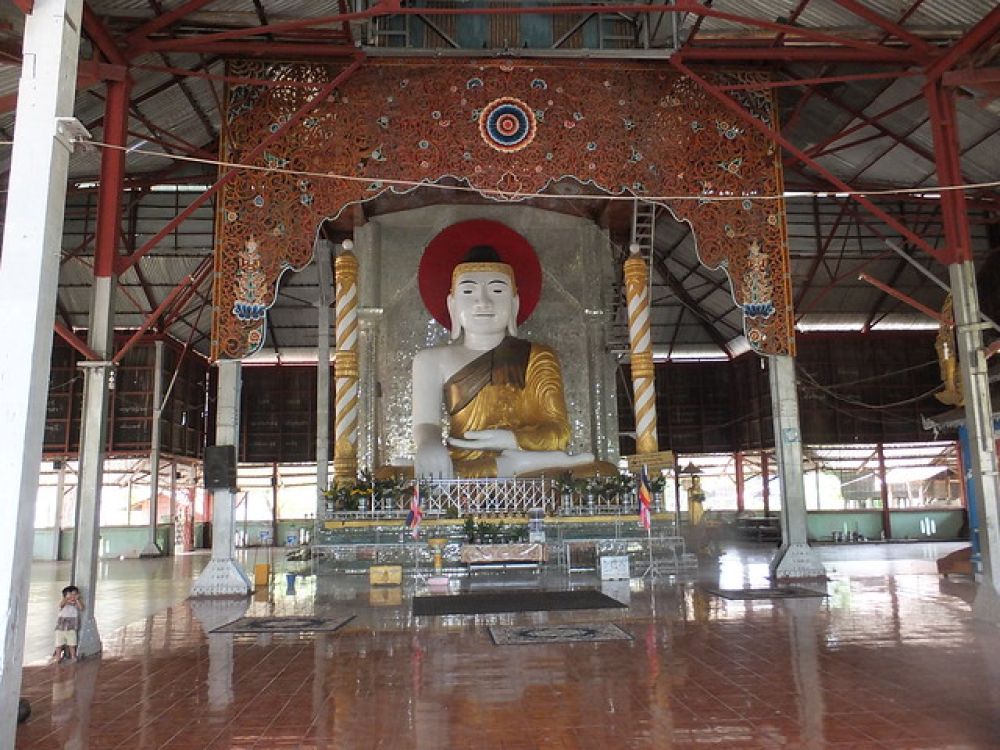

The Mahakuthala Monastery stands as a testament to Sittwe's religious heritage, nestled within the cultural tapestry of Rakhine State. Visitors from around the world journey to this remarkable destination to experience the tranquility of monastic life and explore the spiritual practices that have been in place for centuries.
Although not as well-known as some of Myanmar's (Burma's) more prominent attractions, such as the ancient temples of Bagan or the scenic Inle Lake, the Mahakuthala Monastery has its own unique draw for those interested in the country's rich Buddhist traditions. The monastery, like many other religious sites in Myanmar, has been a place of pilgrimage for devout Buddhists and a point of interest for culturally minded tourists.
The history of tourism at Mahakuthala Monastery is deeply intertwined with Myanmar's broader history of tourism, which has seen periods of growth and contraction due to varying factors, such as political climate and global interest. Interest in Myanmar's unique culture and heritage has been the driving force behind the tourism industry's gradual expansion in the region.
In recent years, Myanmar has opened its doors to the world, leading to an influx of tourists eager to discover the country's hidden gems. Sittwe, with the Mahakuthala Monastery as one of its cornerstones, has seen a surge in interest, especially among those seeking more authentic and less commercialized travel experiences.
Responsible tourism has also become a significant trend in the area, with visitors becoming more conscious of their impact on local communities and environments. Efforts are made to ensure that visits to historical and religious sites, including the Mahakuthala Monastery, are conducted in a manner that respects the local culture and sustains the heritage.
Travelers to the Mahakuthala Monastery will find a serene, contemplative environment. Monks and novices go about their daily rituals, offering an intimate glimpse into their way of life. Visitors are expected to be respectful of the site's religious significance and are often encouraged to participate in guided tours to gain a deeper understanding of the monastery's history and the role it plays in the community.
As with other religious sites in Myanmar, there is a dress code for visiting Mahakuthala Monastery. Guests are advised to wear modest clothing and to remove shoes before entering the sacred areas. Photography may be restricted or disallowed, so it is best to ask for permission or follow posted signs.
Looking ahead, the future of tourism at Mahakuthala Monastery is hopeful with the growing trend of immersive and authentic travel experiences. As Myanmar continues to develop its tourism infrastructure while preserving its cultural sites, the Mahakuthala Monastery is likely to attract a more diverse range of visitors, keen to learn about the country's spiritual practices and to engage with the local community in meaningful ways.
Community-based tourism initiatives may also increase, offering tourists the chance to stay with local families and participate in daily activities, fostering a deeper connection between the monastery, its visitors, and the surrounding neighborhood.
While the global tourism landscape continues to evolve, the Mahakuthala Monastery remains a timeless beacon of culture and spirituality, inviting all who seek to discover the heart of Myanmar's Rakhine State.